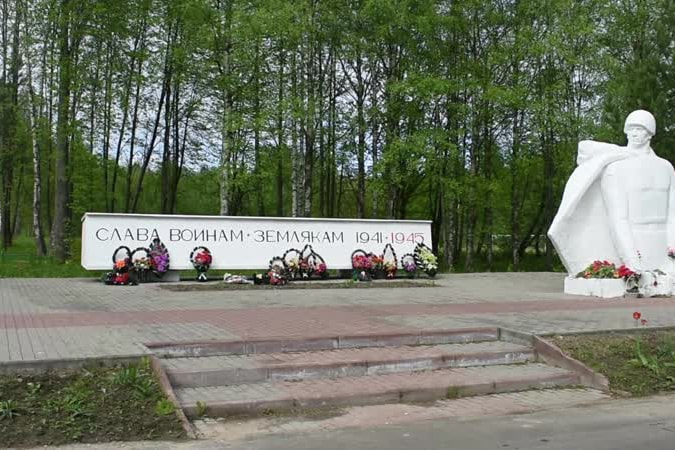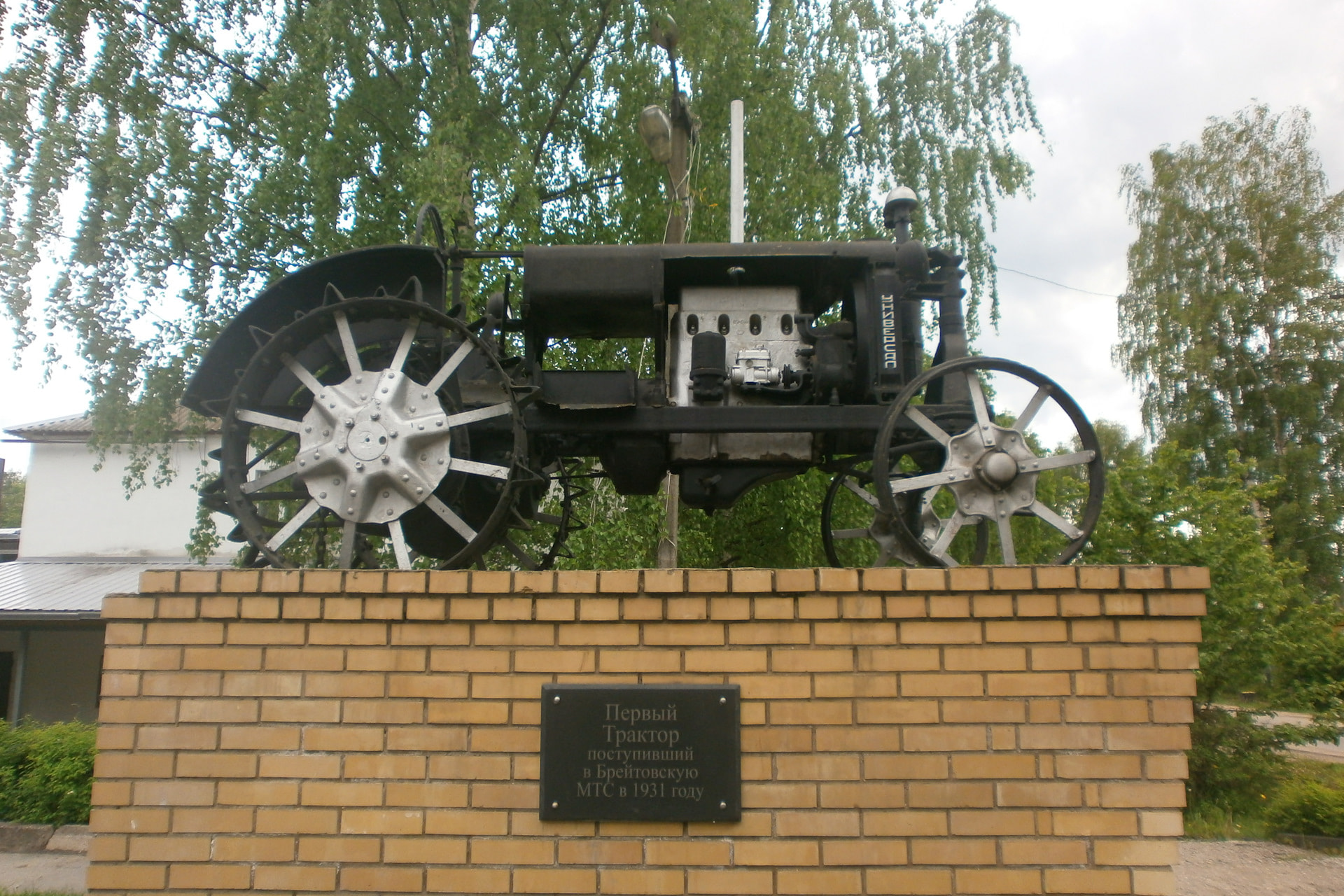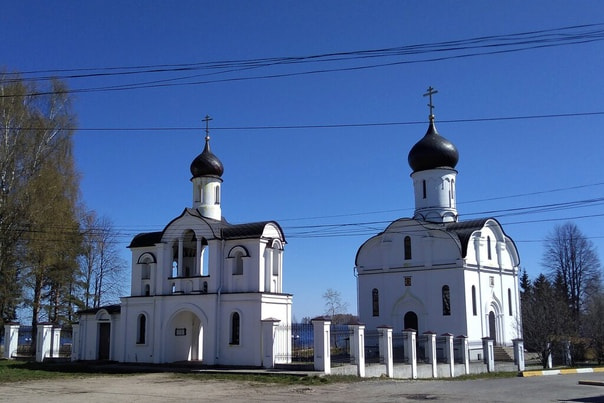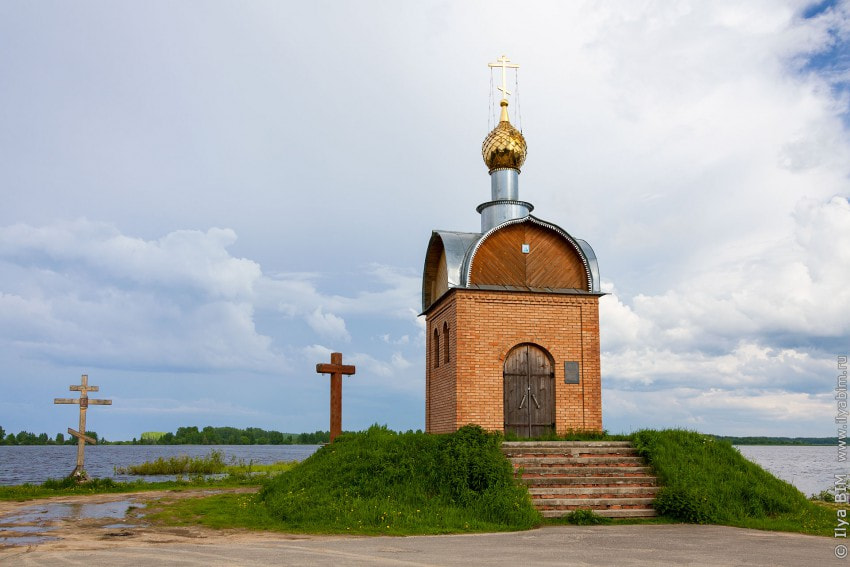Breitovo is an ancient village
Find out the legends of Breitov's origin.
Immerse yourself in the world of the flooded Mologa,
A once-thriving city,
a victim of the man-made sea.
Visit unique exhibitions,
where the crafts of bygone eras come to life.
waypoints
1. Victory Park

In 1960, the Breitov center with administrative buildings was located where the market is now located. A stele was erected near the building of the district executive committee, on the sides of which the names of the countrymen who died in the Great Patriotic War are written. On May 9, rallies were held at the foot of this monument, flowers and wreaths were laid at it. In 1973, a new monument was erected in the park-a memorial to fellow countrymen in the Great Patriotic War of 1941-1945.
2. Брейтовский историко-краеведческий музей
 Museum
MuseumThe museum is located in a house that was transported from the territory flooded by the Rybinsk reservoir. The exhibition tells about the life of the former Sitsky region. There are items on display that were collected in the Breitovo neighborhood, which are remembered by past generations, imbued with the spirit of history, have a unique charm and are of interest.
One of the halls is dedicated to needlework, because Breitovo has long been famous for linen crafts: a weaving mill, numerous spinning wheels, shuttles, tow samples, embroidered towels, shirts, cute rugs, a collection of antique irons and a sewing machine.
The collection of pottery includes crinkles, pots, cast-iron pots, jugs. Some of them still have simple ornaments: twigs, circles. The "balsams" are interesting – elongated vessels with a thin neck and handle, they reached Breitov from the far southern regions, from the same Caspian Sea, into which, as is known, the Volga River flows, the main waterway. Cute "hand washes" are suspended pots with spouts, in those days they didn't even dream of plumbing. The exhibition is complemented by a collection of glassware: bottles of various sizes.
Peasant life continues to be illustrated by samovars, sieves, troughs, worn furniture, kerosene stoves, wooden spoons, a mortar and pestle, hooks, bast shoes, birch bark boxes and scapulars (cases for timber). Interestingly, there is a large bucket made of thick wood, upholstered in iron, and a wonderful rocker arm decorated with a simple but cute ornament.
Iron products include huge keys, horseshoes, a bell and round mysterious "sharkuns", as well as a coal barrel, locks and a small collection of heavy wrought–iron chests.
The peasant's room at the beginning of the XX century immerses in the atmosphere of everyday life of those times. It includes a table with a samovar, chairs with massive wooden backs, benches covered with rugs, a walking clock, an old mirror in a carved frame, a cradle under a lace canopy, and in the red corner a lamp in front of an icon covered with a towel.
In the other hall there is a gentleman's lounge. On a round table covered with a lace napkin, there is an album with retro photographs, an inkwell with a goose quill, on the opposite wall there is an impressive chest of drawers with an old radio, samples of antique photographic equipment, a porcelain rooster that miraculously has not lost its bright colors, very beautiful cross–stitched paintings – a bouquet of flowers and a portrait of the same leader of the chickens.
The stand in the corridor is dedicated to archaeological finds, including arrowheads left on the battlefields after the famous Battle of Sitsk.
The museum has a hall dedicated to the Great Patriotic War. There are photographs, documents that once belonged to the Breitov front-line soldiers, hiking clubs, helmets, cartridges, an overcoat and, as a hope for peacetime, a gramophone with a captured radio. There is a monument from the village of Dudenevo in the hall. Not only are the names of all the non-returning heroes listed on it, but in its lower part, under glass, there is a real Stalingrad land, gray, burnt, and completely dotted with ragged metal fragments. That's exactly how she was after the bloody battle... and the white daisies on the terrible ground...
3. Monument to the first tractor drivers and the first tractor of the Breitovsky district.

The monument was the Universal II tractor, which belonged to Vladimir Ivanovich Smelov– one of the first tractor drivers of the district.
The old Universal-2 tractor by V.I.Smelov at one time at the Rassvet collective farm wanted to be scrapped, but they yielded to the request of the honorary collective farmer and gave it to personal use. Vladimir Ivanovich constantly maintained it in good working order, plowed his vegetable garden on it in the village of Argun. And if the neighbors asked, he did not refuse them for a bottle.
4. Брейтовский районный культурно-досуговый центр

Mosaic made of ceramic. Lev Mikhailovich BUCHKIN would have turned 84 today. The older generation of Breitovites remembers the talented artist well. Everyone who has passed by the Breitovsky Recreation Center at least once has seen beautiful mosaic panels on the facade depicting a collective farmer and a fisherman, made by Lev Mikhailovich.
5. Church of the Nativity of John the Baptist

Before the flooding by the Rybinsk Sea, there were two temples in Breitovo: John the Baptist (1767) and in the name of the Nativity of the Blessed Virgin Mary (1887). During the creation of the Rybinsk reservoir, the temples were destroyed.
The construction of a new church in honor of the Nativity of John the Baptist, as the successor and continuer of the traditions of the destroyed one, began in the fall of 2010. The builders were invited from Ukraine, and residents of the Breitovsky district helped to carry out auxiliary work.
6. The Mother of God – Nikolskaya Chapel

The chapel was conceived as a penitential candle of our people for the destroyed shrines and became the first chapel in Russia in honor of the Leusha Icon of the Mother of God.
The Orthodox chapel was built in honor of Nicholas the Wonderworker, one of the most revered saints in Russia. In trouble, in sorrow and joy, a Russian man remembers him, asking for help and mercy, hoping for a miracle. Sailors and fishermen pass under his blessing – everyone who "walks" on the water.



